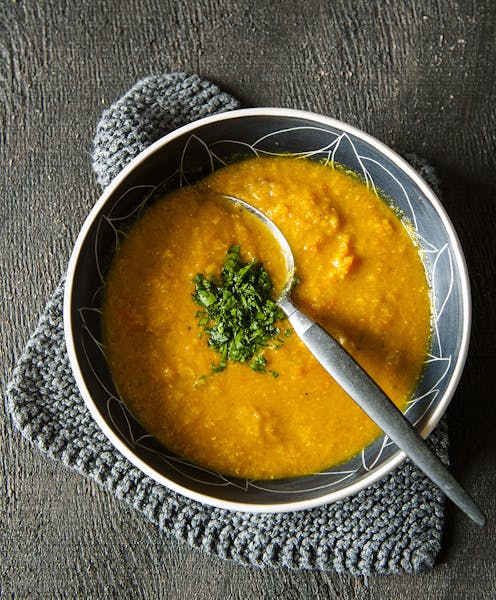Lentils make soup making deliciously simple. They're quick cooking and add a nutty, earthy flavor to the bowl.
Of the varieties available in our stores — brown, green, red and black — red is the best choice for soup. The seed coat has been removed and the lentils have been split in half, so they cook in less than half the time of those sold whole.
Red lentils, ranging in color from muted orange to brick red, turn a golden hue as they simmer and collapse to enrich the texture and eliminate the need for cream. In fact, you can sprinkle a handful of red lentils into any soup or stew to thicken the dish. They are a staple of Indian cooking and pair beautifully with warm Asian flavors — ginger, turmeric, coriander, cardamom, cumin, nutmeg and garlic, plus citrus and fresh cilantro. Red lentils are most often associated with dal, the staple accompaniment to many Indian meals.
Lentils of any variety do not need to be soaked before they're cooked. The brown, green and black lentils will retain their shape as they simmer, making them a fine choice for salads, side dishes, chili and stews.
Brown lentils are the most common; the green (aka French or Puy lentils) are shiny and peppery tasting; black or Beluga lentils, named for the caviar they resemble, are distinctly earthy.
Cooking times for all lentils will vary greatly depending on the variety and their age. The longer they've sat on the shelf, the drier and tougher they become, needing more time to open up. Use a ratio of one part lentils to three parts water and simmer until they turn tender.
These varieties will work in just about any recipe for red lentils if the cooking times are adjusted, but the results will not be as pretty. The color of red lentils brightens the bowl.
Now that the holidays are winding down and the weather is drab and gray, I'm looking for recipes to lift my mood while warming the kitchen. This golden soup is as cheery as it is comforting, so perfect for a blustery day.
The recipe is flexible, depending on what you have in your pantry. Substitute sweet potato or peeled squash for the carrot; add cooked chicken or shrimp if you'd like a heartier meal. This soup requires only a little chopping before it practically cooks itself. Plus, it tastes better when reheated, a bonus.
Beth Dooley is the author of "In Winter's Kitchen." Find her at bethdooleyskitchen.com.
